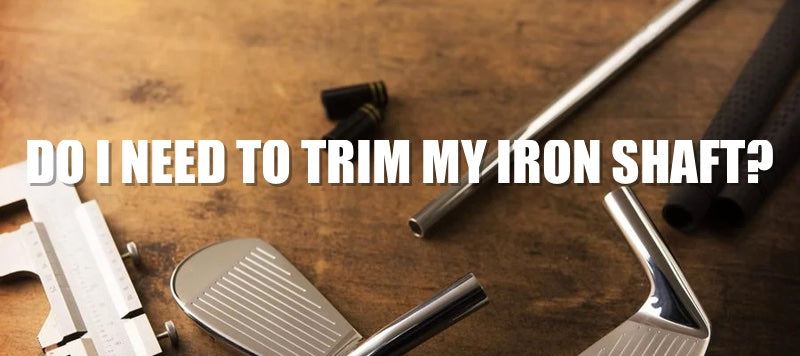
Shaft Trimming: A Tale of 2 Shafts
Iron shafts come in either uncut lengths (usually 41" or 42"), OR discrete lengths. Both types require some amount of trimming.
Uncut iron shafts usually mean the shaft is a parallel tip (0.370") shafts. One of the reasons parallel tip shafts exist is so that club-builders can keep minimal stock on hand. Instead of stocking individual shafts for every club, the same shaft can be tip trimmed to fit any iron club. In additional to trimming the tip, you'll then need to trim the butt end, to achieve the final desired club length.
Discrete length shafts, where the iron shafts come shorter in lengths as you go higher up in club number, are in most cases also tapered tip (0.355"). These shafts are pre-trimmed at the tip but NOT at the butt end. The expectation is that your club-builder will trim the butt to achieve the desired final club length. For many standard length clubs, you will need to trim somewhere between 1/2" to 1".
The lengths are longer than needed (for standard clubs) to allow for longer than standard clubs for taller players. If you need your clubs to be 1" over standard, then you may won't need to trim at all!
So in summary, trimming is needed for both parallel and tapered shafts. This is true for wood shafts as well (with the exception of our plug & play Assembled Shafts + Adapter/Grip).
Following the trimming instructions
Shaft manufacturers provide all trimming instructions on their websites. Or, you can reach out us here, and we'll help you find the information you need.
As a quick sanity guide, you'll also want to look for the "parallel tip length" specification for a shaft. You'll never want to trim more than these lengths since doing so would change the flex composition and potentially compromise the shaft strength.
Why are there both tapered and parallel tip shafts?
The evolution of tapered shafts came about when club manufacturers, or OEMs, needed a fast and inexpensive way to assemble lots of clubs that wouldn't come apart once installed. They found the easiest way to do this was to place the burden on shaft manufacturers. Shaft manufacturers were tasked with creating discrete length tapered tip shafts (that required molds for every length of every flex), that didn't need to be tip trimmed. This allowed the assembly of clubs to go fast, and with minimal error.
Turns out tapered tip shafts (going into tapered hosels) also made up for any shortcomings of ineffective glue back in the day. After epoxy was invented, we no longer had to worry about flying heads at the range. But until then, tapered tip shafts helped to ensure a snug hold on the club head.
It was commonly thought that tapered tip shafts performed better than parallel tip shafts, but this was debunked in blind testing.
This guy makes it look easy but trimming a golf shaft can be dangerous if you don't have the right equipment. We always recommend working with a professional club-builder who has the proper safety tools for trimming golf shafts.
